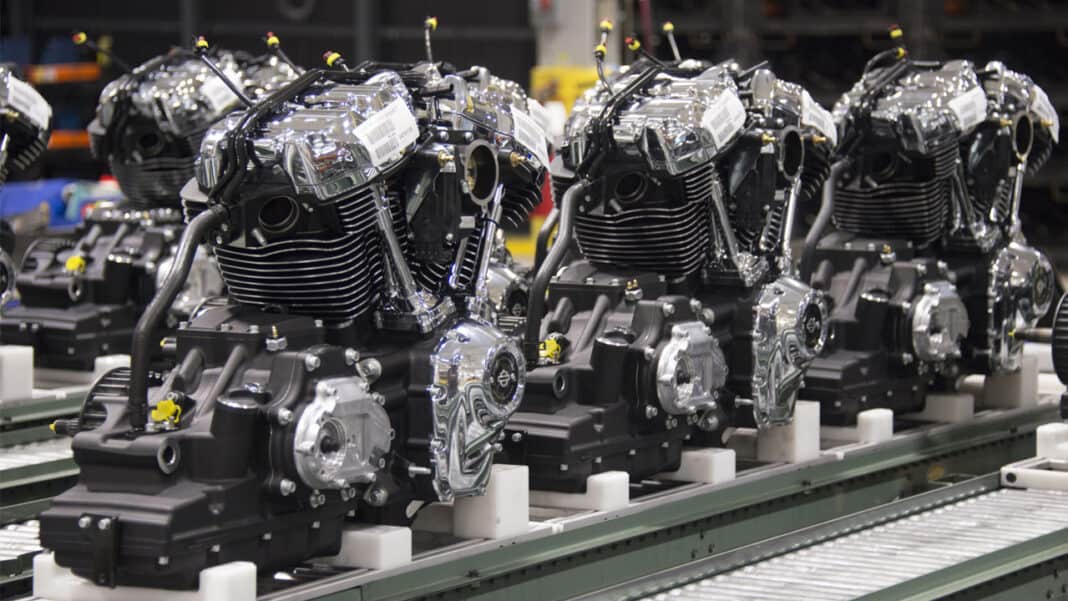Harley-Davidson Inc.
3700 W. Juneau Ave.,
W156 N9000 Pilgrim Road, Menomonee Falls
11800 W. Capitol Drive, Wauwatosa
Industry: Motorcycles
Employees: 6,000
harley-davidson.com
Retail sales of new Harley-Davidson motorcycles in the U.S. declined 5.6% in the first nine months of the year, according to the Milwaukee-based company’s latest earnings report.
The good news? That was an improvement from a 10.2% drop in the first three quarters of 2018 and the industry as a whole saw its smallest decline in 14 quarters.
Harley, which has its headquarters at North 37th Street and West Juneau Avenue, a powertrain production facility in Menomonee Falls and a product development center in Wauwatosa, has seen a lot of change since 2017, when it announced a strategic shift to focus on building motorcycle riders instead of just motorcycles.
In addition to shifting demographics and increased competition, the company has faced increased tariff costs and the ire of President Donald Trump. This year alone, tariffs will cost the company $105 million, a number that will fall to around $20 million next year because its motorcycles for Europe will be assembled in Thailand instead of the U.S.
BizTimes profiled the company’s new strategy in a May 2017 cover story headlined “Harley shifts gears to attract new riders.” The company’s quarterly reports showing declining sales make it easy to wonder if the strategy is gaining any traction.
But according to Harley’s analysis of industry data, global ridership is up from 3.9 million in 2014 to 4.3 million in 2018, including 3 million Harley riders in the U.S.
“Never have there been more Harley-Davidson riders,” Matt Levatich, president and chief executive officer of Harley-Davidson, told analysts on the company’s most recent earnings call.
Harley’s data also shows that there were more new and returning riders across all age groups in 2018 than in 2010. Among those 18 to 29 years old, the number of new and returning riders per 1,000 U.S. residents was 50% higher.
The strategic shift Harley made in 2017 set out a number of 10-year goals for the company, including: creating 2 million new riders, growing international motorcycle sales volume to 50% of the total, launching 100 new high-impact models, delivering superior return on invested capital and doing it all without increasing its environmental impact.
Then in July 2018, the company unveiled “More Roads to Harley-Davidson,” a five-year, $825 million plan to accelerate its progress and generate $1 billion to $1.5 billion in additional revenue by 2022. The plan included launching new models, including electric, and entering the middleweight motorcycle segment, creating broader access through e-commerce and flexible distribution points and developing a stronger dealer network.
Harley then refined some of its targets this fall. The company is now aiming to have 4 million riders in the U.S. instead of creating 2 million new riders. Harley’s own data showed it added 502,000 riders in 2018 but lost 450,000, according to a Baird analyst note.
The company is also now aiming to grow international revenue – instead of volume – to 50% of the business, a change that accounts for all of the efforts to grow the business, including merchandise and smaller displacement motorcycles.
The refined plans also included an emphasis on amplifying the Harley brand and the company continues to sponsor events and activities that may not immediately match the conventional image of Harley, including the World Surf League, Spartan obstacle racing and The 2020 Hella Mega Tour featuring Green Day, Weezer and Fall Out Boy.
Earlier this year, Harley hired Neil Grimmer, the co-founder of Plum Organics, to serve as global brand president. However, he was removed from the position in October after “an internal inquiry along with a third-party investigation into concerns that his judgment and conduct as a senior leader did not align with our culture and the values we expect all our employees to demonstrate,” according to a Harley spokesperson.
While the company’s third quarter results show continued declines in retail sales and revenue, Baird’s most recent analyst note suggests things could improve “if the economy holds up.”
“Much of the payoff comes late in the 2022 plan,” the note said. “But with a decent economy, we believe the narrative improves in 2020-2021.”
Levatich was asked by analysts for his take on the current economic environment and he acknowledged there’s “quite a bit of uncertainty,” adding the company is acting with an abundance of caution.
“We can’t predict the future any more than anyone else can,” he said. “All we can do is be as nimble and responsive as possible.”


